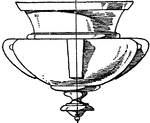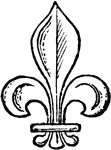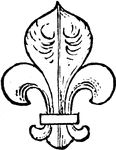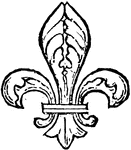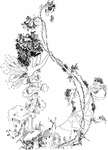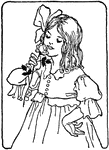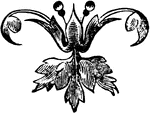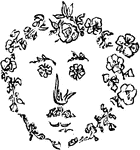
Modern Italian Majolica Flower-Vase
This modern Italian majolica flower-vase is made out of ceramic.

Modern Flower-Vase
This modern flower-vase is a hyacinth glass which is intended for forcing bulbs into water.
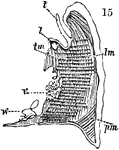
Perpendicular Section of a Sea Anemone
An perpendicular section of a sea anemone. Sea anemones are a group of water dwelling, predatory animals…
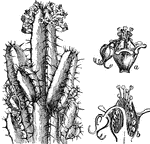
Resin Spurge
The Resin Spurge (Euphorbia resinifera) is a flowering plant that superficially resembles a cactus.…

Duckweed
Common duckweed, Lemna. The entire plant is reduced to a leaf-like expansion which bears a…
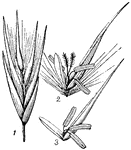
Reed
The common reed of the American and European reed swamps, growing from 5 to 12 feet high with leaves…

Section of Branch Showing Exogen
"Exogen. 1. Section of a branch of three years' growth: a, medulla or pith; b b, medullary sheath; e…

Extrorse Stamens of Flower of Staff Vine
Extrorse or outward facing stamens of the flower of Hippocratea, a genus of staff vine.

Clove Pink
The fimbriate petals of the flower of the Clove Pink (Dianthus caryophyllus), from the Caryophyllaceae…

Common Flax
Common Flax (Linum usitatissimum) is a flowering plant in the Linaceae family of flaxes.
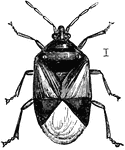
Insidious Flower Bug
The Insidious Flower Bug is an insect in the Heteroptera suborder of true bugs.

Crown Imperial
The Crown Imperial or Kaiser's Crown (Fritillaria imperialis) is a flowering plant in the Liliaceae,…

Funnelform Corolla
"In botany, applied to a monopetalous corolla shaped like a funnel, in which the tube enlarges gradually…
Flower
Tangrams, invented by the Chinese, are used to develop geometric thinking and spatial sense. Seven figures…

Flower
Tangrams, invented by the Chinese, are used to develop geometric thinking and spatial sense. Seven figures…
Flower
Tangrams, invented by the Chinese, are used to develop geometric thinking and spatial sense. Seven figures…
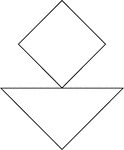
Flower
Tangrams, invented by the Chinese, are used to develop geometric thinking and spatial sense. Seven figures…
Flower
Tangrams, invented by the Chinese, are used to develop geometric thinking and spatial sense. Seven figures…

Flower
Tangrams, invented by the Chinese, are used to develop geometric thinking and spatial sense. Seven figures…
Flower
Tangrams, invented by the Chinese, are used to develop geometric thinking and spatial sense. Seven figures…

Flower
Tangrams, invented by the Chinese, are used to develop geometric thinking and spatial sense. Seven figures…
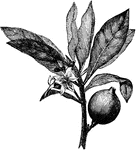
Huito
The Huito (Genipa americana) is a small tree with edible fruit in the madder family, Rubiaceae.

Great Yellow Gentian
The Great Yellow Gentian (Gentian lutea) is a flowering plant in the Gentian family, Gentianaceae.
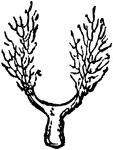
Indian Rice Grass
Indian Rice Grass (Zizania aquatica), also known as Wild Rice, or Water Oats, is found in swampy borders…
Indian Rice Grass
Indian Rice Grass (Zizania aquatica), also known as Wild Rice, or Water Oats, is found in swampy borders…
Indian Rice Grass
Indian Rice Grass (Zizania aquatica), also known as Wild Rice, or Water Oats, is found in swampy borders…

Slender Foxtail Grass
The Slender Foxtail is distinguished from the meadow foxtail by its slender panicle, larger spikelets…

Timothy Grass
Timothy (Phleum pratense), or Herd's Grass is commonly grown for cattle feed and, in particular, as…

Redtop Grass
The Redtop Grass (Agrostis vulgaris), also known as Burden's Grass, is a perennial grass with smooth,…

Fiorin Grass
Fiorin Grass (Agrostis stolonifera) is a variety of English bent. In experiments it was found to be…
Sounthern Bent Grass
The Southern Bent Grass (Agrostis dispar) furnished rather course hay, and leads a large produce on…

Fowl Meadow
Fowl Meadow Grass (Poa serotina), also called False Redtop, has two to four spikelets (shown here),…

Fowl Meadow
Fowl Meadow (Poa serotina), also called False Redtop, has two to four spikelets, sometimes five flowered.…

Fowl Meadow
Fowl Meadow (Poa serotina), also called False Redtop, has two to four spikelets, sometimes five flowered.…
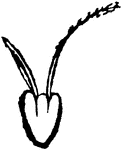
Fowl Meadow
Fowl Meadow (Poa serotina), also called False Redtop, has two to four spikelets, sometimes five flowered.…

Fowl Meadow
Fowl Meadow (Poa serotina), also called False Redtop, has two to four spikelets, sometimes five flowered.…

Wood Meadow Grass
Wood Meadow Grass (Poa nemoralis) grows from eighteen inches to two feet high. It has a perennial, creeping…
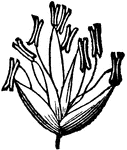
Rough-Stalked Meadow Grass
The Rough-Stalked Meadow Grass (Poa trivialis) has webbed florets and a five-ribbed outter palea. The…

June Grass
June grass (Poa prstensis) is also known as Green Meadow grass, Common Spear Grass, Kentucky Blue grass.…






